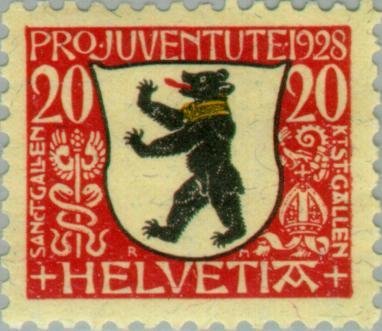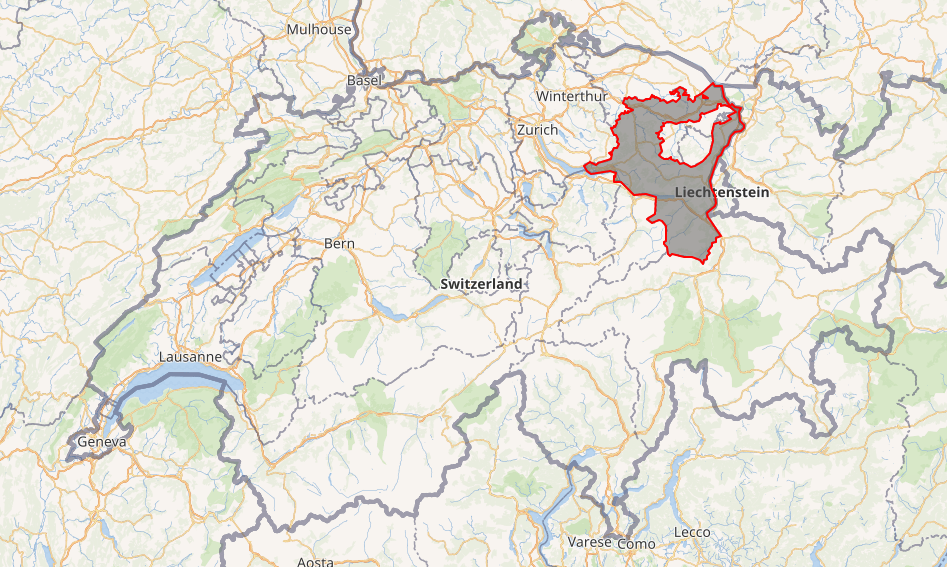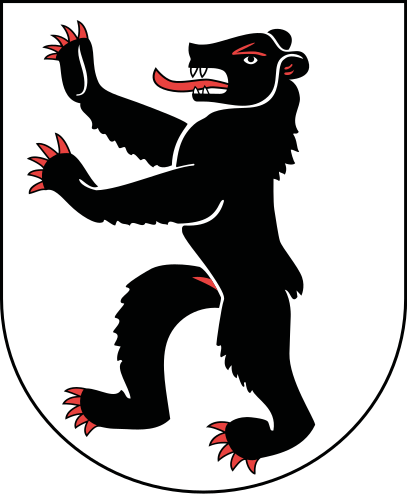The Almost-War Over a Bear’s Missing Privates
The country of Switzerland is divided into administrative districts called “cantons.” Currently, there are 26 of them and each has its own government, similar to how states work in the United States. Today, the Swiss federal government determines where each of the cantons’ borders are; in 1999, for example, the nation adopted a new federal constitution that, in part, recognized some half-cantons as full, independent ones. But that wasn’t always the case. Go back a few centuries, and the borders changed as the whim of the people and their leaders. In the medieval period, cantons tried to take over other cantons, some communities tried to leave their home cantons and form independent ones, etc.
And once, two groups of Swiss people almost went to war over the picture of a bear — and specifically, over the bear’s missing male genitalia.
Let’s start with a picture of the bear. The original version, that is.

The image above is a stamp from 1928, but the important part of the picture — the bear with its tongue sticking out — is much older than that, dating back likely to the 1300s or so. That’s the former coat of arms of the Canton of St. Gallen, a Swiss district located in the northeastern part of the country. It’s the grey-shaded area in the map below, next to Liechtenstein.

Immediately, you may notice that St. Gallen is oddly shaped — it seems to almost surround another region. And you’d be mostly right. If you zoom in on this map, you’ll see that St. Gallen actually fully surrounds two other cantons, one called Appenzell Innerrhoden and another called Appenzell Ausserrhoden. Togther, those form the historic canton of Appenzell, which is the name we’ll use for our purposes today.
The reason St. Gallen completely surrounds Appenzell is simple: Appenzell used to be part of St. Gallen. In 1403, the people of Appenzell were unhappy with their Saint Gallenite overlords, so they rebelled and declared independence. It’s not clear how quickly that conflict resolved or how, but suffice it to say that shotly thereafter, Appenzell and St. Gallen were separate areas. Appenzell, no longer part of St. Gallen, couldn’t use its flag or coat of arms, so they adopted their own — one inspired by the flag of their former home, but also one that was a bit of an “f-you” to the St. Gallen people. The citizens of Appenzell kept the bear as the center of the flag but changed the background from yellow to white. And they also added bright red claws to the bear, menacing red eyebrows and ear highlights, and, uh, another red body part, as seen below.

If you didn’t notice the change, suffice it to say that the Appenzell bear is quite clearly a male bear.
A century and a half later, Appenzell and St. Gallen were on better terms, and, in 1579, a printer in St. Gallen decided to make a calendar — one that had all of the heralds of all of the cantons on it. But the printer made what is believed to be an innocent error — he accidentally omitted the red organ in the bear’s midsection, turning the he-bear into a she-bear. As the Flags of the World website (which, despite its 1990s design, is fantastic for all things flag-history) notes, “Appenzell almost went to war” over the omission, seeing it as a slight. But no humans were ultimately harmed. Per Flags of the World, bloodshed “was avoided when the printer offered abject apologies and St. Gallen destroyed every copy of the calendar they could find.”
Today, both Appenzells use the bear herald from the 1400s. St. Gallen, though, has adopted a new one over the last few centuries; its new coat of arms, seen here, is some sort of axe/raft mix on a green background, with no bears at all. And more importantly, the two (now three) cantons have lived peaceably since the near-war over the omitted bear privates.
Bonus fact: As noted above, Switzerland borders Liechtenstein. The two are friends, which is good, because in 2007, Switzerland accidentally invaded their tiny neighbor. As the BBC reported, 171 Swiss troops were involved in a training exercise in the Alpine forest straddling the nations’ borders when bad weather caused them to get lost. The company took a wrong turn and ended up a couple of kilometers into Liechtenstein. Upon realizing the error, the company turned around and notified their superiors, who apologized to the Liechtenstein leadership. Liechtenstein didn’t seem to care; a spokesperson told the BBC shrugged off the incursion, saying “it’s not like they invaded with attack helicopters.”
From the Archives: Leasing the Kingdom: Want to rent the whole country of Liechtenstein? Maybe you can!
